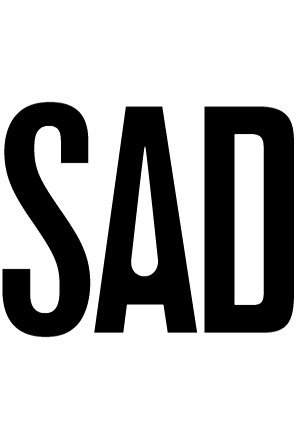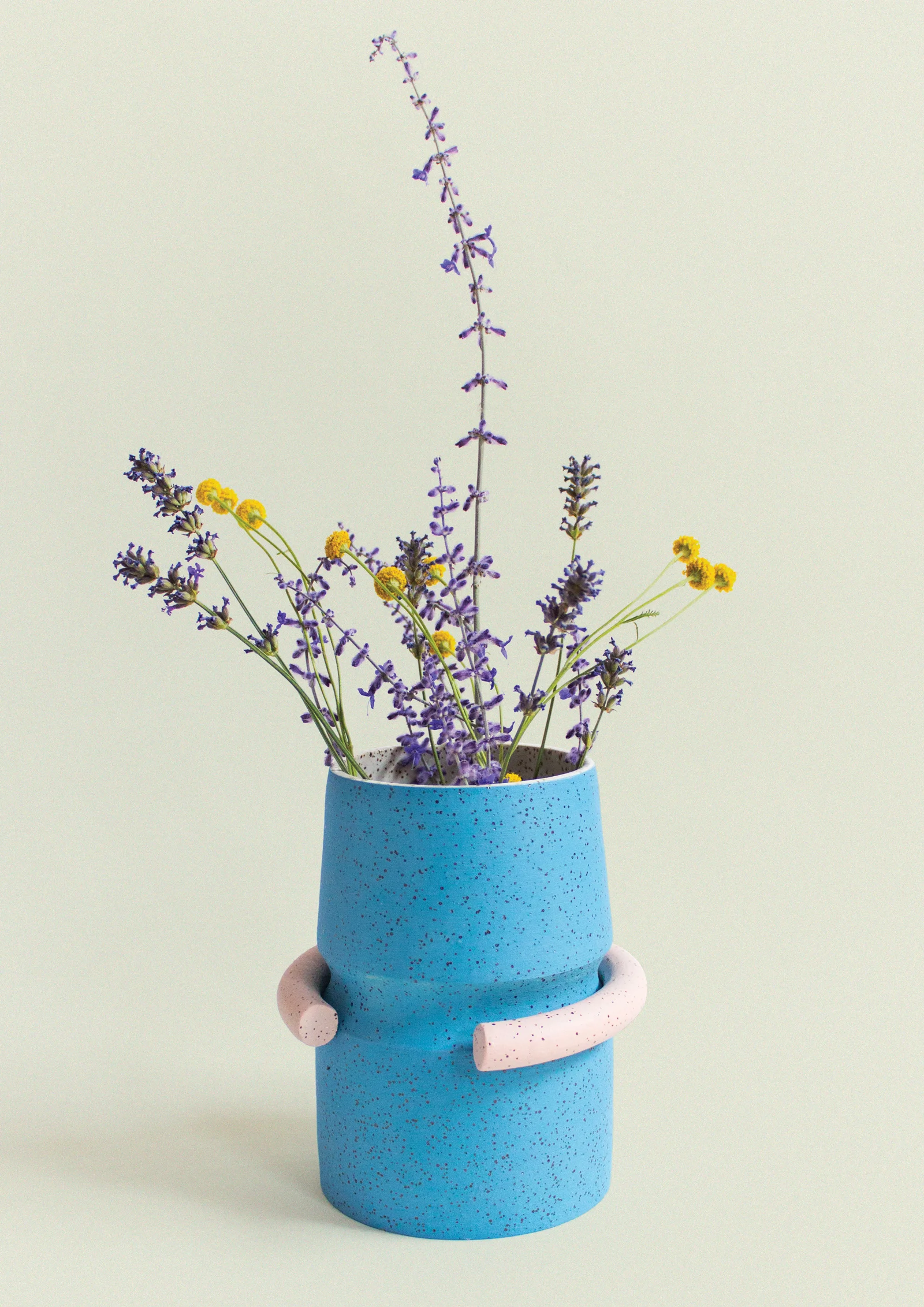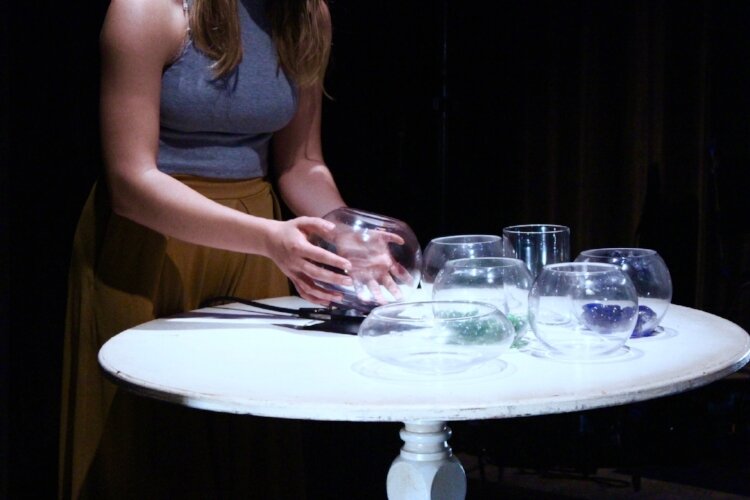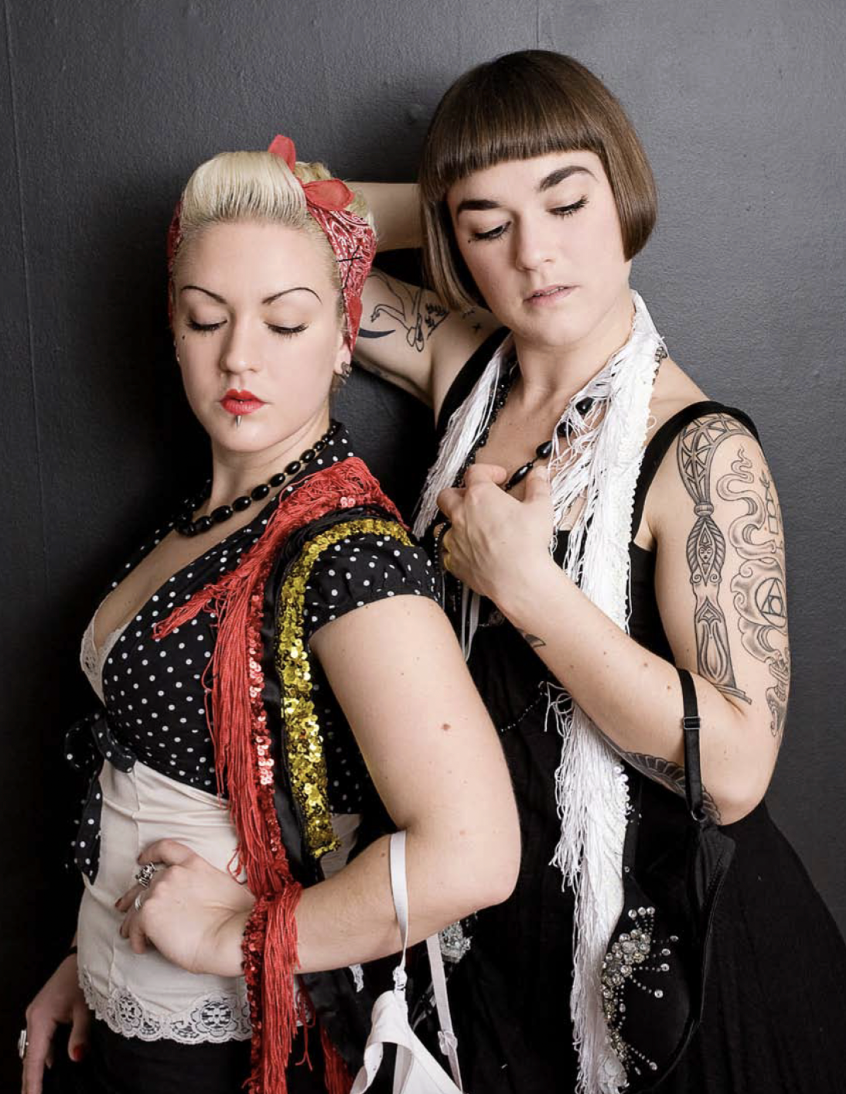When the performers first synchronize their choreography for during in several times, the show begins its sensory climax. The three bodies on stage are redemonstrating movements we’ve seen before, but the choreography danced in unison is more powerful and intense, a building momentum.
There is a blanket at the back of the stage, precisely decorated with an arrangement of items: a pile of sugar, strawberries, bread and kettle. The bodies carve space together. The kettle begins to boil. A body breaks from the flow of movement, walks over to the steamy kettle, gently rests on their knees. The crescendo of pouring water is audible in the slightest sense.
I think of the comforts associated with that sound, the filling of a cup. I think of my parents sitting every night with cups of tea. I think of myself alone, clutching a cup for solace while watching the rain. In this space, it feels as though I am sharing a memory with strangers, watching strange movements. Yet in the unknown of this sharing, there is a strong feeling of connect, a distinct commonality in it all.
The word that best describes in several times is intertwingle— A verb, meaning to interconnect or interrelate in a deep and complex way. The multi-disciplinary work was created by director, choreographer and performance artist Linnea Gwaizda, along with the carefully selected ensemble of Marc Arboleda, Kayla De Vos, Mahaila Patterson-O’Brienon and onstage sound designer Matthew Ariaratnam.
The show explores concepts and constructs of memory, examining how we share memories and how we exist in memory spaces. How even as individuals who experience a wide range of things, our memories intertwine with our surroundings, creating uncanny connections and profound commonalities.
Before the work was showcased during the 35th Vancouver Fringe Festival, in several times was first presented form as Gwaizdas masters thesis at SFU. She was inspired to create the piece while on a trip to her late grandparents’ home in Europe. They died when Gwaizda was young, but she still holds many childhood memories from their home in Quebec.
“It was a place of beautiful tradition, warmth and a connection to the land which they were removed from. When going back to their home country of Poland, and retracing those steps, there was a sense of peculiar familiarity,” says Gwaizda.
”Yet this was a space that I had never been to before. Which got me thinking: where is home? What is a home? When have we arrived in our ancestry?”
in several times doesn’t follow narrative in a traditional sense, existing in a more fluid, dreamlike choreographic space.Through gestures, spoken word, sounds and props, the show creates a visceral recollection of events, emotions, and sensory experiences.
The plethora of objects on stage recall specific sensory memories from Gwaizda’s grandparents’ house. Senses are triggered in this piece each time the performers place ingredients on stage, or when field recordings from Quebec ring out over speakers.
“Smell and taste are a huge part of memory,” says Gwaizda. “I remember the tomatoes and cucumbers being picked from the garden.”















